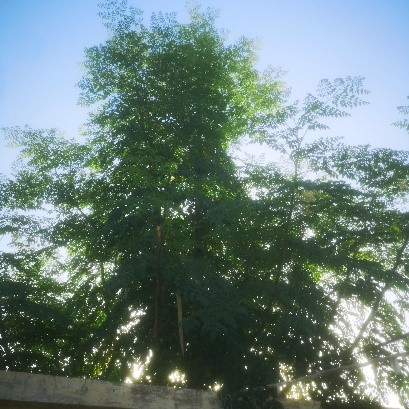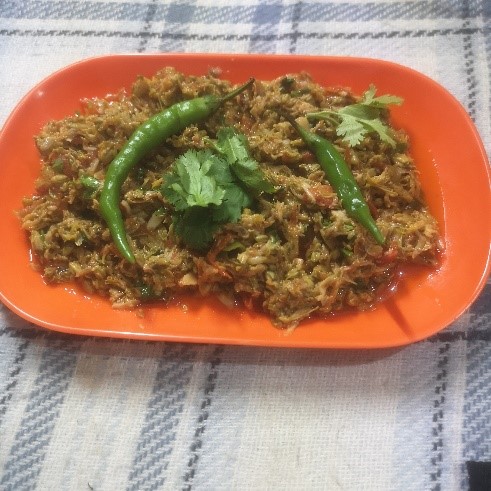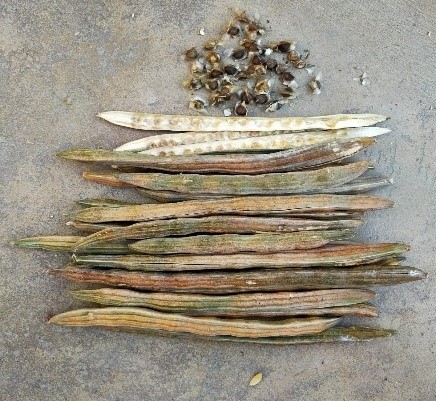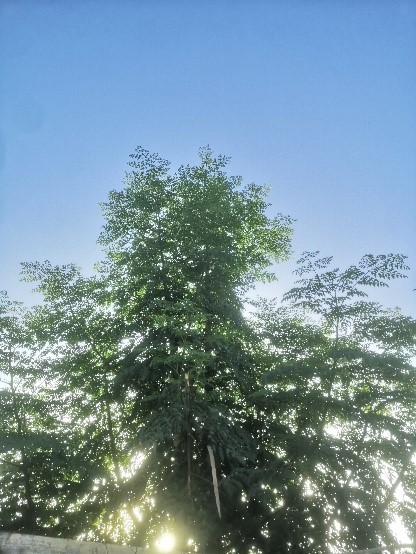
There are thirteen different species of Moringa and interestingly, all species of Moringa have been reported as edible
By Dr. Mahmood Laghari
Growing seasons and climate
Moringa is an edible tree of “Moringaceae” family which is also known as “Miracle tree” because all of its parts are useful for humans and animals. There are thirteen different species Moringa. Interestingly, all species of Moringa have been reported as edible. However, Morigna Oleifera is native to India and is also cultivated in Pakistan. In this article, we put emphasis on M. Oleifera due to availability of significant scientific research reports on it
Possible uses of Moringa Oleifera
Since the cultivation of M. Oleifera is very easy, hence this tree could be an option for sustainable remedy of malnutrition in poor countries. One can grow this tree in any of the tropical and subtropical regions of the world with a temperature between 25 to 35 °C. It grows well in loamy or sandy soils with slightly alkaline or acidic soil pH. The tree with stands a mean annual rainfall between 250 to 3000 millimeters.
Use as a food

According to a research study by Kasolo et al. (2010) every part of M. Oleifera is a storehouse of important nutrients and anti-nutrients. The leaves of M. oleifera are rich in minerals like potassium, calcium, zinc, iron, magnesium, and copper. Another study conducted by Mbikay et al. (2012) revealed that M. Oleifera leaves contain vitamins like vitamin A, vitamin B such as folic acid, pyridoxine and nicotinic acid, vitamin C, D and E. These studies suggest that about 6 spoonful of M. Oleifera leaf powder can meet a women’s daily calcium and iron requirements during pregnancy. However, the nutrients composition of M. Oleifera can vary with locations albeit the nutrients attributes remain the same. Other reports suggest that calcium is an essential element for growth while, 8 ounces of milk can provide 300 to 400 mg of calcium while M. Oleifera leaves powder can provide 1000 mg of calcium. On the other hand, beef has only 2 mg of iron while M. Oleifera leaf powder has 28 mg of iron hence it could be a cheap substitute for iron tablets for treatment of anaemia. Moringa Oleifera leaves are low in calorific value and can be helpful in the diet of the obese.
Use in medicine
Studies have shown that M. Oleifera has long been used in herbal medicine by Indian and Africans to cure more than 300 diseases. Several studies have shown that, moringa can act as an anti-diabetic agent while, according to Divi et al. (2012) the aqueous extracts of M. oleifera can cure Type 1 diabetes and also insulin resistant Type 2 diabetes in rats.
Studies have shown that M. Oleifera has long been used in herbal medicine by Indian and Africans to cure more than 300 diseases

Studies have shown that moringa can be used as an anti-neoproliferative agent, thereby preventing the growth of cancer cells. Soluble and solvent extracts of leaves have been proven effective as anticancer agents. Furthermore, research papers suggest that the anti-proliferative effect of cancer is may be due to its ability to induce reactive oxygen species in the cancer cells. Other studies have shown that the compounds such as glucosinolates, niazimicin and benzyl isothiocyanate are present in the M. Oleifera leaf extract which are responsible for anticancer activities.
Kirisattayakul et al. (2013) suggested that Moringa is a strong neuroprotectant because of its antioxidants which reduce the reactive oxygen species hence protect the brain. According to Sutalangka et al. (2013) M. Oleifera leaf extract decreases the acetylcholine esterase activity and improve cholinergic function and memory.
Moringa is rich in nutrition owing to the presence of a variety of essential phytochemicals present in its leaves, pods and seeds. Kosolo et al. (2010) have reported that it is common in countries like Benin and Senegal to treat children with moringa. It has been proved effective to treat malnutrition in children younger than 3 years. Immature pods of this tree are rich in fiber (46%), protein (20%) and aminoacid (30%) and are effective in treating digestive problems and preventing colon cancer.
Processing
 According to Sallau et al. (2012) maximum fraction of nutrients of M. Oleifera leaves and seed can be utilized with simple processing of boiling with water, as it reduces the cyanide, phytate and oxalate contents. Incorporation of moringa in halawa, pan cake and to other bakery products increases nutrient value and delicacy of the products. It is good in developing protein rich and mineral rich chocolates and halawa. The fortification of bakery products has been suggested to ensure adequate nutrients in children. The mixing of dried moringa leaf powder has been suggested to wheat flour at a mixing rate of 7 gram per kilogram for making soft pan cake (Roti) with enhanced nutritional value.
According to Sallau et al. (2012) maximum fraction of nutrients of M. Oleifera leaves and seed can be utilized with simple processing of boiling with water, as it reduces the cyanide, phytate and oxalate contents. Incorporation of moringa in halawa, pan cake and to other bakery products increases nutrient value and delicacy of the products. It is good in developing protein rich and mineral rich chocolates and halawa. The fortification of bakery products has been suggested to ensure adequate nutrients in children. The mixing of dried moringa leaf powder has been suggested to wheat flour at a mixing rate of 7 gram per kilogram for making soft pan cake (Roti) with enhanced nutritional value.
Preservation
The M. Oleifera products can be preserved by dehydration, which improves the shelf life of the products without change in nutritional value. A report by Yang et al. (2006) shows that a low temperature oven used to dehydrate the moringa leaves retained more nutrients except vitamin C than freeze-dried leaves. Hence, drying can be done using economical household appliance like stove to retain a continuous supply of nutrients in the leaves.
Over doze
An overdose of moringa may cause high accumulation of iron. High iron can cause gastrointestinal distress and hemochromatosis. Hence, a maximum daily dose of 70 g of moringa is suggested to be good and prevents over accumulation of nutrients.
Other uses
The flowers of M. Oleifera are used to make tea with hypocholesterolaemic properties. Moringa flowers are said to taste like mushrooms when fried. Moringa seeds are used to extract oil which is called the Ben oil. This oil is rich in oleic acid, tocopherols and sterols. It can also withstand oxidative rancidity. The oil can be used in cooking as a substitute for olive oil, as perfumes and also for lubricating watches.
____________________
Dr. Mahmood Laghari is Associate Professor and Chairman, Department of Energy and Environment, Faculty of Agricultural Engineering, Sindh Agriculture University, Tandojam Sindh